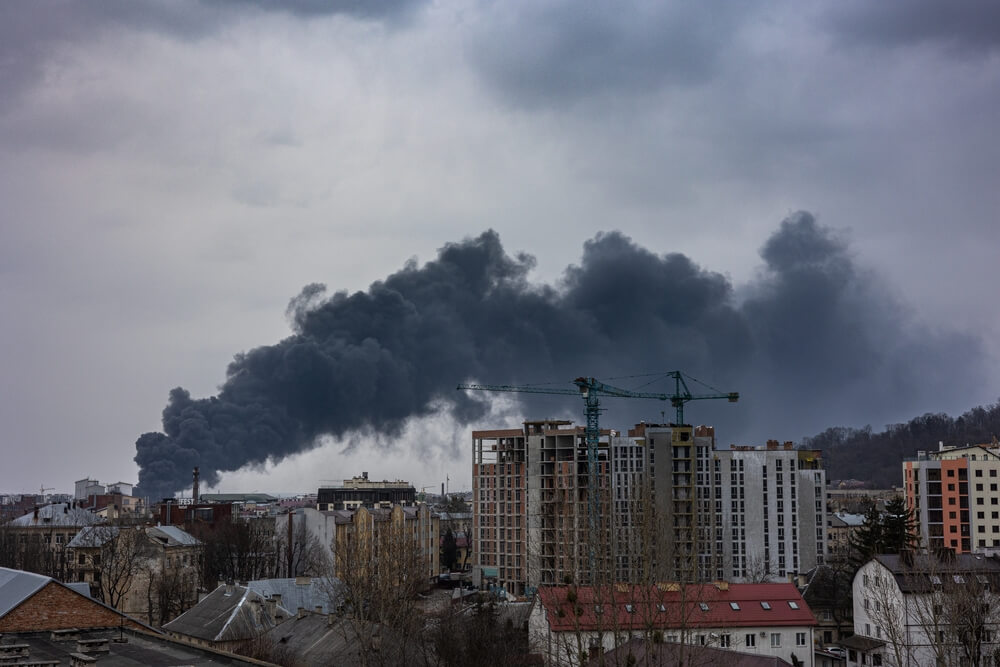Easter is approaching, but peace in Ukraine remains elusive. The civilian population, suffering from unrelenting Russian shelling, feels no mercy.
The UN reports that in March 2025, Russian aggression claimed 164 civilian lives and left 910 injured - a 50 per cent spike in civilian casualties from the previous month, before the supposed ceasefire.
April threatens to be even deadlier, with brutal attacks like the one in Kryvyi Rih, killing 19 and wounding dozens, or in Sumy, where over 30 died and more than 100 were injured, shocking the global community. On the frontlines, too, the ceasefire feels like an illusion.
"On the battlefield, nothing has changed—except for dwindling supplies due to this so-called pause. Beyond that, the fighting rages on as always," says Roman Kostenko, a Ukrainian parliamentarian and SBU colonel.
20 April was President Donald Trump’s deadline for a stable ceasefire in Ukraine, going beyond his campaign promise of a "24-hour" resolution.
With Catholics and Orthodox Christians gathering on the same day for Easter, this could have symbolised a meaningful end to a brutal conflict that has lasted over three years. Yet, Ukraine sees little clarity or progress.
Territorial disputes remain unresolved
The main obstacle—territorial disputes—remains unresolved. Vladimir Putin stubbornly insists on full recognition of four Ukrainian regions as Russian, despite Ukraine liberating parts of them and others never falling under his control.
The U.S. views territorial concessions as the swiftest route to peace. In the past week, this stance was reaffirmed by President Trump’s representatives, Stephen Witkoff and Keith Kellogg, alongside Victoria Spartz, a Republican congresswoman of Ukrainian heritage (later, Kellogg and Spartz attempted to distance themselves from these statements, though without fully retracting them).
Kyiv’s greater concern lies in proposals to downsize Ukraine’s military to a point where it could not repel a future attack
Ukraine’s leadership, in turn, firmly rejects any territorial concessions, especially when demanded so audaciously.
"Even if someone hypothetically agreed to such a deal, the parliament would never approve it. The votes simply aren’t there—it’s unthinkable," Ukrainian MP Victoria Podgorna stated in an interview with Tomorrow’s Affairs.
Kyiv’s greater concern lies in proposals to downsize Ukraine’s military to a point where it could not repel a future attack.
"This is a non-negotiable red line for us," Podgorna asserts. "We will never consent, as it would lead to swift occupation. They could overrun us in a matter of days."
Devastating Russian attacks
Initially critical only of Ukraine’s leadership, President Trump has grown increasingly frustrated with Vladimir Putin following devastating Russian attacks.
He lamented, “Too many people are dying, thousands a week, in a terrible and senseless war — a war that should have never happened.”
The temporary ceasefire, which is less a formal treaty than a framework of political pledges, called for a “partial truce” sparing energy infrastructure.
 While Russia may have paused strikes on energy infrastructure, the killing of civilians continues unabated - Roman Kostenko
While Russia may have paused strikes on energy infrastructure, the killing of civilians continues unabated - Roman Kostenko
Putin acknowledged this commitment in a Kremlin press release, while President Volodymyr Zelenskyy publicly confirmed the ceasefire’s activation, with Ukraine marking its start on the evening of 25 March.
In exchange for Russia halting attacks on Ukraine’s already crippled energy grid, Ukraine reportedly agreed to refrain from targeting Russian oil refineries, pipelines, storage facilities, pumping stations, and electricity-generating infrastructure—including power plants, substations, transformers, distribution networks, nuclear facilities, and hydroelectric dams.
There were immediately noted discrepancies between Russia’s interpretation of the ceasefire terms and the agreement Kyiv endorsed. Soon after Ukraine agreed to the truce, Russia targeted facilities of Ukraine’s state energy company. In response, Russia claimed an attack on gas infrastructure in Kursk, a move Ukraine dismissed as a deliberate provocation.
Attacks on energy infrastructure have declined significantly, yet civilians barely perceive any ceasefire.
In Kherson, a brief pause in shelling lasted only a few days—a pattern seen before in this three-year war when Russian forces regrouped. The bombardment soon resumed, with locals enduring relentless assaults in what feels like a daily hunt.
In the Kharkiv region, where Russian troops are trying to cross the Oskil River and continue their advance, shelling has surged dramatically, according to residents.
"Before the truce, our region saw no missiles—just Shahed drones. Now we’re facing ballistic strikes, including Iskanders, and even more Shaheds," a family from Babai, a village distant from the front yet plagued by attacks, shared with me over the phone. "It’s clear the Russians have no interest in a ceasefire."
"Nothing is de-escalating—it’s all a facade," Kostenko asserts, speaking as both a military officer and a politician. "From my perspective, this is a calculated move to craft a narrative for the American president—a way to say, ‘See, we’ve at least reached some agreement.’ But the reality is starkly different: attacks persist, drone strikes are intensifying, and civilians remain targets. While Russia may have paused strikes on energy infrastructure, the killing of civilians continues unabated."
The confusing geopolitical standoff
Podgorna is convinced that a united Europe, bolstered by strengthened defence capabilities, could render Russia unable to sustain the war.
However, she doubts the U.S. can weaken Russia’s alignment with China, given that nearly 40% of the Russian economy now hinges on Chinese support.
A month into the so-called energy ceasefire, neither Ukraine’s government nor its civilians can see any significant effects
A month into the so-called energy ceasefire, neither Ukraine’s government nor its civilians can see any significant effects. Daily attacks continue to claim dozens of lives and shatter countless others.
This confusing geopolitical standoff traps Ukraine in a relentless cycle of conflict and uncertainty, sustained as long as the nation can resist. However, this does not diminish the urgent need to pursue a ceasefire.
However, in the wake of the horrific and devastating attack on Sumy, Ukraine’s General Staff pledged unrelenting retaliation and a steadfast response to the aggressor’s atrocities.